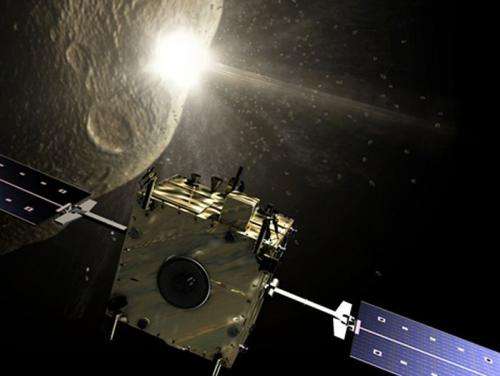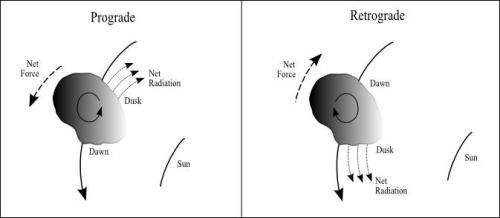Impact mitigation

The save-the-Earth rehearsal mission Don Quijote, commissioned by the European Space Agency, is planned to test the potential of a real life-or-death mission to deflect a mass-extinction-inducing asteroid from a collision course with Earth.
Currently at ‘concept’ stage, the Don Quijote Near Earth Asteroid Impact Mitigation Mission – has been modelled on a proposed flight to either 2002 AT4 or 1989 ML, both being near-Earth asteroids, though neither represent an obvious collision risk. However, subsequent studies have proposed that Amor 2003 SM84 or even 99942 Apophis may be more suitable targets. After all, 99942 Apophis does carry a marginal (1 in 250,000) risk of an Earth impact in 2036.
Whatever the target, a dual launch of two spacecraft is proposed – an Impactor called Hidalgo (a title Cervantes gave to the original Don Quixote) and an Orbiter called Sancho (who was the Don’s faithful companion).
While the Impactor’s role is self-explanatory, the Orbiter plays a key role in interpreting the impact – the idea being to collect impact momentum and trajectory change data that would then inform future missions, in which the fate of the Earth may really be at stake.
The extent of transfer of momentum from Impactor to asteroid depends on the Impactor’s mass (just over 500 kilograms) and its velocity (about 10 kilometres a second), as well as the composition and density of the asteroid. The greatest momentum change will be achieved if the impact throws up ejecta that achieve escape velocity. If instead the Impactor just buries itself within the asteroid, not that much will be achieved, since its mass will be substantially less than any mass-extinction-inducing asteroid. For example, the object that created the Chicxulub crater and wiped out the dinosaurs (yes, alright – except for the birds) is thought to have been in the order of 10 kilometres in diameter.
So before the impact, to assist future targeting and required impact velocity calculations, the Orbiter will make a detailed analysis of the target asteroid’s overall mass and its near-surface density and granularity. Then, after the impact, the Orbiter will assess the speed and distribution of the collision ejecta via its Impact Camera.
However, accurately measuring the degree of deflection achieved by the impact represents a substantial challenge for the mission. We will need much better data about the target asteroid’s mass and velocity than we can establish from Earth. So, the Orbiter will do a series of fly-bys and then go into orbit around the asteroid to assess how much the asteroid is affected by the spacecraft’s proximity.
A precise determination of the Orbiter’s distance from the asteroid will be achieved by its Laser Altimeter, while a Radio Science Experiment will precisely determine the Orbiter’s position (and hence the asteroid’s position) relative to the Earth.
Having then established the Orbiter as a reference point, the effect of the collision of the Impactor will be assessed. However, a significant confounding factor is the Yarkovsky effect – the effect of solar heating of the asteroid, which induces the emission of thermal photons and hence generates a tiny amount of thrust. The Yarkovsky effect naturally pushes an asteroid’s orbit outwards if it has a prograde spin (in the direction of its orbit) – or inwards if it has retrograde spin. Hence, the Orbiter will also need a Thermal Infrared Spectrometer to separate the Yarkovsky effect from the effect of the impact.

And of course, given the importance of the Orbiter as a reference point, the effect of solar radiation on it must also be measured. Indeed, we will also need to factor in that this effect will change as the shiny new spacecraft’s highly-reflective surfaces lose their sheen. Highly reflective surfaces will emit radiation, almost immediately, at energy levels (i.e. high momentum) almost equivalent to the incident radiation. However, low albedo surfaces may only release lower energy (i.e. lower momentum) thermal radiation – and will do so more slowly.
To put it another way, a mirror surface makes a much better solar sail than a black surface.
So in a nutshell, the Don Quijote impact mitigation mission will require an Impactor with a Targeting Camera – and an Orbiter with an Impact Observation Camera, a Laser Altimeter, a Radio Science Experiment and a Thermal Infrared Spectrometer – and you should remember to measure the effect of solar radiation pressure on the spacecraft early in the mission, when it’s shiny – and later on, when it’s not.
More information: Wolters et al., Measurement requirements for a near-Earth asteroid impact mitigation demonstration mission.
Source: Universe Today



















